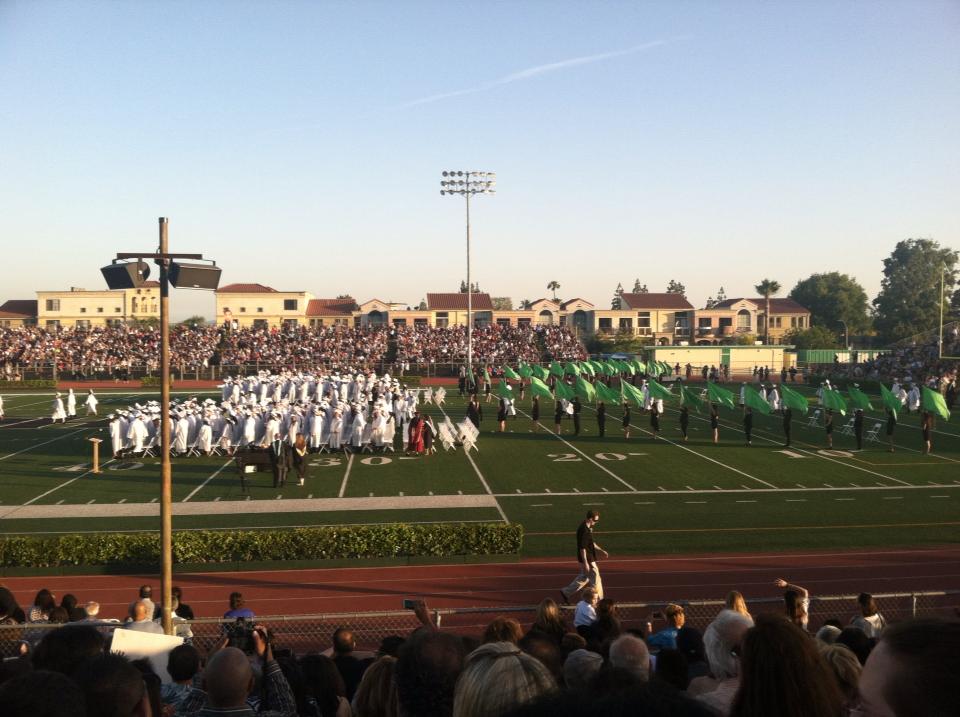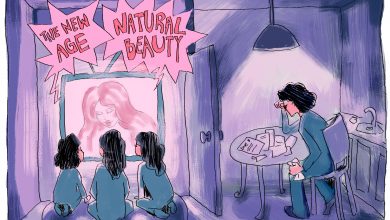6 Barriers to Education People of Color Face

If you step foot in a public school in Beverly Hills and then take a trip to a public school in Downtown Los Angeles, I can guarantee you will see remarkably noticeable differences in the quality of the school buildings and facilities, a very different student demographic, differences in class size, differences in the way school rules are enforced, and so much more.
Though both are public schools in Los Angeles, one student’s educational experience will be vastly different than another’s depending upon the school they attend.
Conservative politicians (the overwhelming majority of whom are old, middle to upper class, hetero, white males) will spew the rhetoric that America is the land of opportunity and all one needs to do to make it is to pull themselves up by the bootstraps, work hard, and they shall succeed.
However, this line of thinking is so flawed and misled.
You see, what if you don’t have boots in the first place?
In a perfect world, merit alone should suffice in how far you make it in life. But we do not live in a perfect world.
Education is the entire foundation upon which our communities are built and the foundation upon which our country produces those that will keep our country running. It is the heartbeat of our nation. Everything we do – all of our potential success – is dependent upon the quality of our education system. Children really are the future.
Despite its importance, its issues are put on the backburner and not prioritized by those who claim to represent us.
What’s more is that the status quo perpetuates a social hierarchy which is deliberately constructed to keep certain people at the top and others at the bottom. It’s a system that attempts to reproduce itself.
The truth is, people of color don’t just pass through life and glide through elementary, middle, and high school to ultimately reach higher education. They have to quite literally navigate the system which has so many hurdles and obstacles along the way to knock people of color off the path.
Upon graduating from UCLA, I reflect so much on my time spent at UCLA, on the education classes I’ve taken with Dr. Howard and the Inequality in Urban Schooling courses in the Labor & Workplace Studies department I’ve taken with Professor Shadduck-Hernandez, and on my degree that I recently picked up from Murphy Hall.
When I look at my degree, I see it as a tool and as a privilege. I recognize that my education level is a privilege. Though education is a right, it is treated as a privilege currently afforded to some though it should be equally accessible to all. Knowledge is a privilege. Consciousness is a privilege.
All of these privileges double as tools. My degree is a tool and a means I will utilize to turn around and help uplift my community. If there is one goal I want to accomplish in life, it’s to help pave the way for other people of color struggling to navigate the system and help them gain access to higher education.
Everyone’s path is unique. When I look around at all my former peers at UCLA, I’m blown away by the diversity in each person’s story. I also reflect on my story and my identity and what my path to UCLA looked like.
I was born to two immigrant parents from Jordan, one of which was a university graduate and the other which was a high school graduate. My dad was a small business owner until a new Walmart was built across the street and squashed his tiny business. Combine that with some shady business partners and you have a recipe for disaster and bankruptcy.
My educational path started with the Head Start preschool program in Reseda. Head Start is an early education provider for low income families. Eligibility is based upon your family’s income level in relation to the established poverty line.
For middle school and high school, I attended LAUSD schools. I attended my local elementary school in Van Nuys, CA from kindergarten-2nd grade and a different elementary school for 3rd-5th once my family moved homes. I attended a magnet program via the lottery system for middle school in another LAUSD school from 6th-8th. And then there was a huge dilemma about where I’d go for high school because high school is crucial for prepping you for college.
My home school in high school was a very low performing, underfunded high school in the San Fernando Valley. By luck of the draw, I was able to attend a magnet program at a high performing public charter school – Granada Hills Charter High School – instead.
I always think about how different my life might have been if I hadn’t gone to Granada because all the opportunities I was presented with at Granada would have been unimaginable at my home school.
I also always think about the hundreds of other students who apply to Granada each year and get denied and must resort to their local high schools.
Whereas a white, middle-to-upper class, heterosexual, able-bodied, teen in the suburbs might have had a pretty stable and comfortable life causing their path to be pretty straightforward until college, people of color have to face so many other barriers before reaching the finish line. Yet, they’re still expected to compete in the same race for the same end goal: access to higher education and admission to college.
The following are a list of a few barriers many people of color have to face. This list is not exhaustive:
-
Financial Burden/Poverty
When your family lives near or below the poverty line, the main priority is keeping a roof over your family’s head and putting food on the table. For many students, money is a huge factor that negatively affects their educational experiences.
If a student’s family isn’t financially stable, they may not have access to proper nutrition, health care, enough food, a stable living situation, etc. Low income students might not get the opportunity to afford or attend early childhood education like pre-school, to take test prep courses for standardized tests like the SAT, or to have access to additional tutoring services, etc. So many students of color depend on the free or reduced lunch programs as their main source of food.
Many students take on part-time or full-time jobs while attending high school to help support their families. Others drop out of school or don’t pursue a college education because they’re needed to help support their parents financially. Many don’t attend college for fear of being in debt because of student loans.
Of course, class doesn’t exist in a vacuum. Class must be discussed and analyzed in relation to race and other parts of one’s identity. So many external factors come into play when understanding a community’s economic status. For our education crisis to be fixed, the root of the problem must be remedied and class structure is most definitely one of the many things that need fixing.
-
Lack of Agency
When students’ parents are immigrants and are not familiar with the country’s education system or when their parents have trouble speaking English, that affects a child’s educational experience. Parents quite literally put their child’s future in school officials’ hands.
Children of immigrant parents often take on the role of being their parents’ translator. Children of immigrant parents also face so much stress from balancing a double-life in which their school environment tries to pressure them to assimilate while their parents try to keep them rooted in culture. Furthermore, since the parents may not be familiar with the education system here, the parents may not know how to ensure their child gets the most out of their educational experience.
Thus, the child loses agency and loses someone who can vouch for them. If the child is tracked on the lower or underperforming track because of a bad test score on a culturally biased standardized test that doesn’t adequately measure their intelligence nor their potential, their parents won’t be aware and able to insist their child gets put on the “gifted” or honors track against counselor’s advice.
Lastly, many students of color’s parents are not college educated themselves. One of the biggest determining factors in whether a child will attain higher education is if the mother is college educated. When there is a lack of agency, there is a feeling of helplessness that is really hard to shake off.
-
Economically Disadvantaged Schools & Funding Disparities
Returning back to the image of visiting a school in Beverly Hills and a school in the inner city of Los Angeles, you will notice huge differences: different class sizes, differences in quality of facilities, difference in quality or level of experience of teachers, difference in extracurricular activities offered, etc. There are also differences in the resources and programs available to students.
All of this is affected by the amount of funding schools get.
The process by which a school is allocated funding is very complex and varies depending on the city, school district, and state. However, in many parts of the country, funding is partly dependent upon the neighborhood’s property taxes. Instead of funds being distributed in a need-based process, some schools have a surplus of funds because property in the area is expensive and have much more money than they know what to do with whereas some schools have so little money that they are struggling to provide basic things like replacing outdated, worn out textbooks.
You don’t choose the financial status you’re born into. You don’t really have a say in what school you go to. If the lottery system fails and you have to go to your home school, you have no other option. And yet, you’re somehow expected to achieve the same results as that student at Beverly High. Though access to quality public education is a right that should be equally accessible to everyone despite economic status, the fact of the matter is, your educational experience will most likely be heavily affected by your economic status.
-
Cultural Deficit Model
The Cultural Deficit Model is a theory in education that tries to explain the underachievement of students of color by attributing it to the student’s culture, family, and community. Yes, there is an actual theory that tries to blame the victim for their own oppression. This theory claims that students from certain cultures don’t value the right things that’ll help them be successful in school. They’ll claim that certain cultures don’t value education in the same way their white middle and upper class counterparts do. They blame parents in poverty for not being as involved in their child’s education.
The scariest part is, this theory is deeply embedded in the way school’s function and are structured today.
Instead of pursuing reform by addressing the root of the problem – that being institutionalized means of oppression that results in an opportunity gap between students from different backgrounds – only the outcome is assessed with no context (that of which requires a critical race theory lens to assess). This theory is taught in some teacher training programs and some teachers enter the profession believing in the cultural deficit model.
This results in students of color being overrepresented in special education and underrepresented in rigorous courses (honors and AP classes), higher drop out/push out rates amongst students of color, and less attention given to students of color. When this model of thinking is practiced, teachers feel like the problem is out of their hands and often feel defeated and unknowingly begin to not hold all students to the same standard, but rather, expect less out of students of color.
-
School-to-Prison Pipeline
Here on campus, a campaign was recently launched called IGNITE which stands for Invest in Graduations, Not Incarceration, Transform Education to divest from the prison industrial complex and end our school’s complicity in the perpetuation of the school-to-prison pipeline.
The American Civil Liberties Union explains the school-to-prison pipeline as a trend in which children of color (predominantly black and latino children) are isolated, punished, and pushed out of the classroom and pushed into juvenile detention centers and ultimately, prison.
Instead of receiving additional educational counseling, these students are disregarded, marked as delinquents, and treated as criminals from a young age. Zero tolerance policies are put in place which heavily punish these students for minor infractions of school rules. Their communities and school hallways are more heavily policed and they’re viewed as criminals by default.
Students of color are also more likely to be suspended or expelled. In fact, 16% of students enrolled in public school are black whereas 51% are white, and yet, black students are suspended and expelled at three times the rate of white students.
Furthermore, the state pays more to incarcerate them than to educate them. They are heavily underrepresented in institutions of higher learning, yet over-represented in prisons. With the booming prison industrial complex, prisons are becoming increasingly privatized. This means that there are companies out there that thrive and profit off of the mass incarceration of mostly people of color. Our schools could be the bridge that guides all students to higher education, but instead, the school-to-prison pipeline prevails in many ways for many reasons. One cannot address education reform without addressing this deliberate trend.
-
Racial Segregation & Gentrification
In our history classes, we’re taught that racial segregation was a thing of the past. We’re shown pictures of “whites only” schools, water fountains, restaurants, etc. We’re taught that after Brown vs. Board of Education, schools were magically desegregated overnight and we all lived happily ever after. Though de jure segregation is illegal, de facto segregation persists. This means that though schools cannot be segregated by race by law, they still are segregated by race in different ways.
Once again, if you look at the demographics of that public school in Beverly Hills or another wealthy suburb and compare it to the demographics of a school in the inner city, lack of diversity should be the first thing you notice.
The Atlantic actually claims that schools are more segregated today than they were in the late 1960s!!! And what’s to blame? Racist housing policies that have resulted in gentrified and segregated communities.
Gentrification is when wealthier people move into an urban city and raise the rent and property value, pushing the people of that community out. Thus, communities begin to build based on race and economic status and in turn create the demographics of the local neighborhood schools.
Result: An Opportunity Gap & Achievement Gap
Again, this list of barriers is not exhaustive. There are multiple other factors that obstruct a student of color’s path to higher education. The result of all these barriers is an opportunity and achievement gap.
The opportunity gap refers to input, whereas the achievement gap refers to output. In other other words, the opportunity gap is defined as the “unequal or inequitable distribution of resources and opportunities.” All of the barriers listed above shed light on the opportunities each student has depending on their race, ethnicity, socioeconomic status, etc. And what is the outcome?
The outcome is a gap in achievement between students of color and their white counterparts.
Students of color perform poorly compared to their white counterparts across the board, their drop out rates are higher, retention rates lower, incarceration rates higher, representation in higher education lower, etc. But that mustn’t be analyzed without understanding the opportunity gap and what is widening the achievement gap more and more in the first place.
After reading this article, it’s needless to say that our education system needs serious reform. It’s especially important to approach this reform from a Critical Race Theory (CRT) perspective.
CRT acknowledges the existence of institutionalized racism that is pervasive and dominant and uses that as an analytical lens upon which people must examine existing power structures. It stresses the importance of acknowledging the existence of white privilege and white supremacy and it rejects traditions of meritocracy alone.
To add another dimension to the CRT, it stresses the importance of intersectionality and acknowledging the intersections of people’s multi-faceted identities. It values ethnographies and other means by which people are able to share their narratives that are counternarratives to the dominant or the mainstream. It stresses a commitment to social justice.
As an intersectional feminist committed to fighting all systems of oppression in addition to and along with gender inequality, education reform is one of the most pertinent social justice issues we should be committed to. Education reform and access to education is most definitely a feminist issue!




